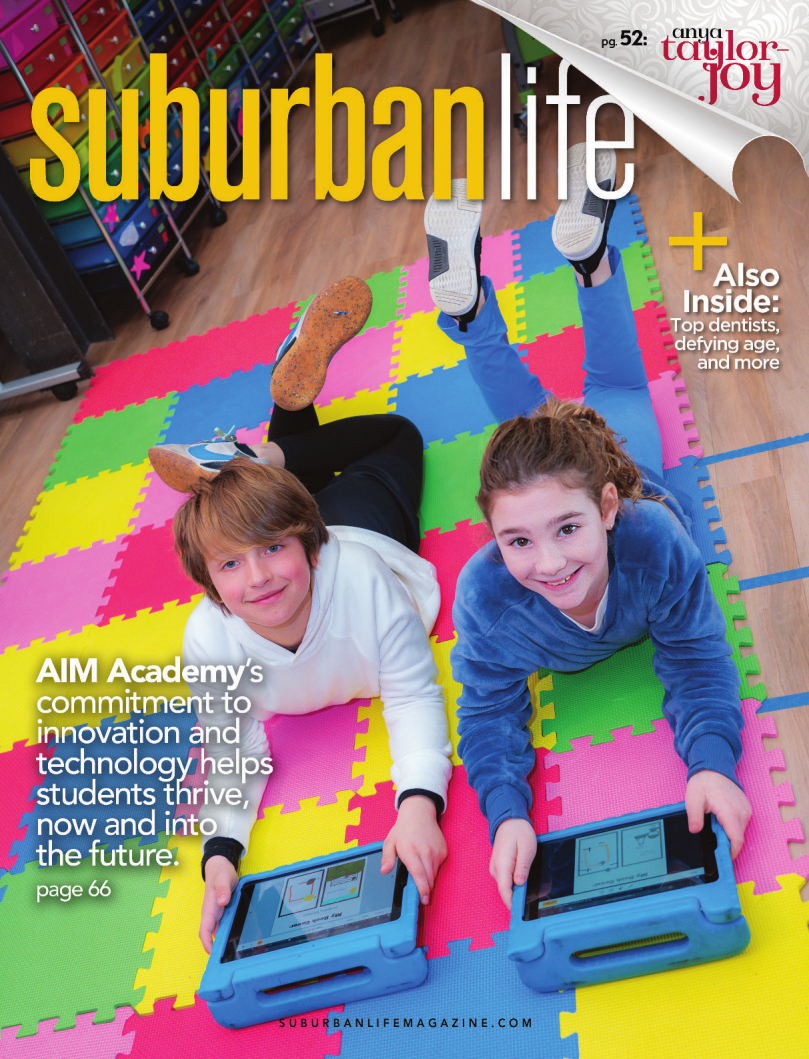
Pushing Education Forward
AIM Academy’s commitment to innovation and technology helps students thrive, now and into the future.
When Aaron Brill left Pennsylvania for California in 2003 and eventually began a career in education across the country, Nancy Blair and Pat Roberts were still three years away from co-founding a groundbreaking new school called AIM Academy.
AIM has grown over the past 17 years to become the Philadelphia area’s largest school geared toward children with language-based learning differences such as dyslexia, dysgraphia, and dyscalculia. The school provides personalized and evidence-based instruction to prepare students in grades one through 12 for the future, with a focus on providing them innovative opportunities to learn and develop skills.
Seeking a return to the East Coast last year to be closer to family, Brill was happy to discover such a transformative school where technology-assisted learning is not only embraced but also pioneered. He became AIM’s new Director of Innovation Technology at the beginning of this school year, a role that covers every grade at AIM. He works hand in hand with the school’s teachers to incorporate innovative additions into the curriculum. These may include the use of robotics, virtual reality (VR), augmented reality (AR), and opportunities for service learning through AIM’s mobile STEAM lab.
“It’s been a busy fall and winter but fun to see where I can make inroads and build relationships with students and faculty,” Brill said. “To watch our 404 students’ creativity blossom on some of the various tech platforms is really exciting. We really have an eye on cutting-edge technology and how it can be impactful in a school setting.”
A prime example is Brill’s decision to introduce CoSpaces Edu, an AR platform with kid-friendly tools to construct worlds in a digital space and add characters and interactions with block-based coding. After speaking with fifth-grade teachers about a classroom unit focusing on the ethical treatment of animals and how animals can be productive members of society, Brill had the students use CoSpaces Edu for two projects; one included the creation of an ethical zoo, and the experience proved to be both enjoyable and successful in getting the lesson across.
Brill, who oversees the STEAM, engineering, and design thinking programs along with the robotics team and STEAM outreach, is excited about a new 17,000-square-foot addition to campus with additional dedicated spaces for cutting-edge STEAM programming. Head of School Annette Fallon says construction of the new space, which is expected to begin by the end of this school year, will feature science classrooms as well as areas for students to develop and practice problem-solving skills with real-world application.
“It is only going to enhance the opportunities that our kids have,” Fallon says. “It will further expand our Global Innovation Hub to include new spaces for robotics, coding, programming, artificial intelligence, and drones. It will also give us a new space to continue building on our partnerships with external programs, universities, corporations, and nonprofits, because that’s been a big part of the fabric of AIM since its start.”
Pat Roberts and Nancy Blair, inspired by Sally L. Smith, founder of The Lab School of Washington, started AIM as a disruptor to the educational system when they both asked themselves, “Why does it take so long for research to get into the classrooms?” The school’s mission is driven by a philosophy that children “with language-based learning disabilities can and will thrive in a rigorous academic setting when they are taught by a highly committed, experienced, and creative faculty who have ongoing access to the latest research, best practices, technological resources, and experts in their field.”
Fallon’s interest in helping kids with learning differences goes back to her own childhood, when she saw family members and fellow students in class struggle with receiving the kind of instruction they needed.
At AIM she has the opportunity to support the strengths and needs of creative students with vibrant learning opportunities and AIM’s Integrated Literacy Model, a research-informed, structured literacy curriculum that supports all student learners. The model is the basis for AIM Pathways teacher training professional development courses through the AIM Institute for Learning & Research.
“We have educators here who are highly skilled and highly trained, and we also have specialists such as speech language pathologists, occupational therapists, psychologists, and counselors,” Fallon says. “The level of collaboration between all of those groups is just tremendous. That doesn’t happen in every school environment, and I think it’s unique to AIM. It’s a community where everyone is here in service of others, not in service of themselves.”
AIM Academy
1200 River Road
Conshohocken, PA 19428
(215) 483-2461
www.aimpa.org
1200 River Road
Conshohocken, PA 19428
(215) 483-2461
www.aimpa.org
Photo by Jody Robinson
Published (and copyrighted) in Suburban Life magazine, January 2023.



